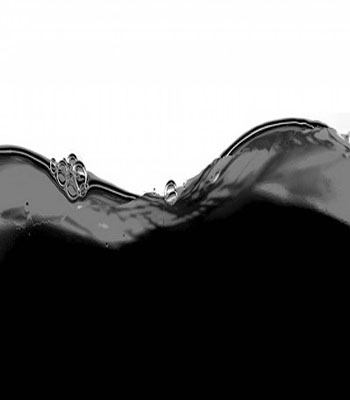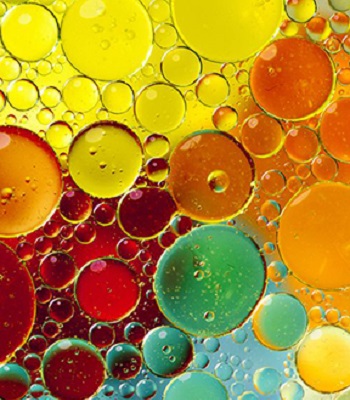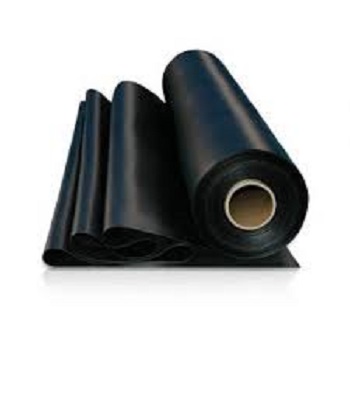Cutback- Cutback bitumen
0,00 €Cutback Bitumen is by adding controlled amounts of petroleum solvent such as Kerosene, Gasole and Gasoline.
Base on reduce of bitumen viscosity for spraying in ambient temperature for several application such as Asphalt Pavement Construction, Maintenance,Prime and Tack Coating and …
Base on the time of curing after spraying, Cutback bitumen classification as Rapild Curing(RC), Medium Curing (MC) and Slow Curing (SC)
Cutback- Cutback bitumen
0,00 €Cutback Bitumen is by adding controlled amounts of petroleum solvent such as Kerosene, Gasole and Gasoline.
Base on reduce of bitumen viscosity for spraying in ambient temperature for several application such as Asphalt Pavement Construction, Maintenance,Prime and Tack Coating and …
Base on the time of curing after spraying, Cutback bitumen classification as Rapild Curing(RC), Medium Curing (MC) and Slow Curing (SC)
Cutback- Cutback bitumen
0,00 €Cutback Bitumen is by adding controlled amounts of petroleum solvent such as Kerosene, Gasole and Gasoline.
Base on reduce of bitumen viscosity for spraying in ambient temperature for several application such as Asphalt Pavement Construction, Maintenance,Prime and Tack Coating and …
Base on the time of curing after spraying, Cutback bitumen classification as Rapild Curing(RC), Medium Curing (MC) and Slow Curing (SC)
Emulsions-Bitumen & Tar
0,00 €Whatever the end use, application conditions usually require bitumen to behave as a mobile liquid. In principle, there are three ways to make highly-viscous bitumen into a low-viscosity liquid:
- Heat it
- Dissolve it in solvents
- Emulsify it
Bitumen emulsions are two-phased systems consisting of bitumen, water, and one or more additives to assist in formation and stabilization and to modify the properties of the emulsion. The bitumen is dispersed throughout the water phase in the form of discrete globules, typically 0.1 to 50 microns in diameter, which are held in suspension by electrostatic charges stabilized by an emulsifier. Bitumen emulsions can be divided into four classes. The first two are, by far, the most widely used:
- Cationic emulsions
- Anionic emulsions
- Non-ionic emulsions
- Clay-stabilized emulsions
The terms anionic and cationic stem from the electrical charges on the bitumen globules. This identification system originates from one of the fundamental laws of electricity – like charges repel, unlike charges attract. If an electrical potential is applied between two electrodes immersed in an emulsion containing negatively charged particles of bitumen, they will migrate to the anode. In that case, the emulsion is described as “anionic”. Conversely, in a system containing positively charged particles bitumen, they will move to the cathode and the emulsion is described as “cationic”. The bitumen particles in a non-ionic emulsion are neutral and, therefore, will not migrate to either pole. These types of emulsion are rarely
Bitumen emulsions are divided into three categories in terms of setting:
- Rapid-setting (RS)
- Medium-setting (MS)
- Slow-setting (SS)
Cationic RS emulsion is currently the widely used category in Iran. Emulsion setting is irreversible phenomenon which may occur due to the evaporation of the water phase or the attraction of water by stone materials. Throughout this phenomenon, the water phase disappears and bitumen particles will have less space. Then, the bitumen gradually moves towards the surface or coats the aggregate.
Cationic Emulsions
These emulsions are known as cationic because their bitumen aggregates carry positive charges by using Ammonium salts or Amines compounds. They are divided into the following categories:
Emulsions-Bitumen & Tar
0,00 €Whatever the end use, application conditions usually require bitumen to behave as a mobile liquid. In principle, there are three ways to make highly-viscous bitumen into a low-viscosity liquid:
- Heat it
- Dissolve it in solvents
- Emulsify it
Bitumen emulsions are two-phased systems consisting of bitumen, water, and one or more additives to assist in formation and stabilization and to modify the properties of the emulsion. The bitumen is dispersed throughout the water phase in the form of discrete globules, typically 0.1 to 50 microns in diameter, which are held in suspension by electrostatic charges stabilized by an emulsifier. Bitumen emulsions can be divided into four classes. The first two are, by far, the most widely used:
- Cationic emulsions
- Anionic emulsions
- Non-ionic emulsions
- Clay-stabilized emulsions
The terms anionic and cationic stem from the electrical charges on the bitumen globules. This identification system originates from one of the fundamental laws of electricity – like charges repel, unlike charges attract. If an electrical potential is applied between two electrodes immersed in an emulsion containing negatively charged particles of bitumen, they will migrate to the anode. In that case, the emulsion is described as “anionic”. Conversely, in a system containing positively charged particles bitumen, they will move to the cathode and the emulsion is described as “cationic”. The bitumen particles in a non-ionic emulsion are neutral and, therefore, will not migrate to either pole. These types of emulsion are rarely
Bitumen emulsions are divided into three categories in terms of setting:
- Rapid-setting (RS)
- Medium-setting (MS)
- Slow-setting (SS)
Cationic RS emulsion is currently the widely used category in Iran. Emulsion setting is irreversible phenomenon which may occur due to the evaporation of the water phase or the attraction of water by stone materials. Throughout this phenomenon, the water phase disappears and bitumen particles will have less space. Then, the bitumen gradually moves towards the surface or coats the aggregate.
Cationic Emulsions
These emulsions are known as cationic because their bitumen aggregates carry positive charges by using Ammonium salts or Amines compounds. They are divided into the following categories:
Emulsions-Bitumen & Tar
0,00 €Whatever the end use, application conditions usually require bitumen to behave as a mobile liquid. In principle, there are three ways to make highly-viscous bitumen into a low-viscosity liquid:
- Heat it
- Dissolve it in solvents
- Emulsify it
Bitumen emulsions are two-phased systems consisting of bitumen, water, and one or more additives to assist in formation and stabilization and to modify the properties of the emulsion. The bitumen is dispersed throughout the water phase in the form of discrete globules, typically 0.1 to 50 microns in diameter, which are held in suspension by electrostatic charges stabilized by an emulsifier. Bitumen emulsions can be divided into four classes. The first two are, by far, the most widely used:
- Cationic emulsions
- Anionic emulsions
- Non-ionic emulsions
- Clay-stabilized emulsions
The terms anionic and cationic stem from the electrical charges on the bitumen globules. This identification system originates from one of the fundamental laws of electricity – like charges repel, unlike charges attract. If an electrical potential is applied between two electrodes immersed in an emulsion containing negatively charged particles of bitumen, they will migrate to the anode. In that case, the emulsion is described as “anionic”. Conversely, in a system containing positively charged particles bitumen, they will move to the cathode and the emulsion is described as “cationic”. The bitumen particles in a non-ionic emulsion are neutral and, therefore, will not migrate to either pole. These types of emulsion are rarely
Bitumen emulsions are divided into three categories in terms of setting:
- Rapid-setting (RS)
- Medium-setting (MS)
- Slow-setting (SS)
Cationic RS emulsion is currently the widely used category in Iran. Emulsion setting is irreversible phenomenon which may occur due to the evaporation of the water phase or the attraction of water by stone materials. Throughout this phenomenon, the water phase disappears and bitumen particles will have less space. Then, the bitumen gradually moves towards the surface or coats the aggregate.
Cationic Emulsions
These emulsions are known as cationic because their bitumen aggregates carry positive charges by using Ammonium salts or Amines compounds. They are divided into the following categories:
ISOGUM-DA -Bitumen & Tar
Iso Gam, Waterproofing of buildings, which was traditionally done with asphalt and bitumen until the last forty years, with the advent of waterproofing and the advantages of this type of insulation, these insulations gradually gave way to these. Today, in most buildings, whether in the foundation stage or in the insulation of walls, services, and roofs, insulation is done with a layer of iso gum waterproofing.
ISOGUM-DA -Bitumen & Tar
Iso Gam, Waterproofing of buildings, which was traditionally done with asphalt and bitumen until the last forty years, with the advent of waterproofing and the advantages of this type of insulation, these insulations gradually gave way to these. Today, in most buildings, whether in the foundation stage or in the insulation of walls, services, and roofs, insulation is done with a layer of iso gum waterproofing.
ISOGUM-DA -Bitumen & Tar
Iso Gam, Waterproofing of buildings, which was traditionally done with asphalt and bitumen until the last forty years, with the advent of waterproofing and the advantages of this type of insulation, these insulations gradually gave way to these. Today, in most buildings, whether in the foundation stage or in the insulation of walls, services, and roofs, insulation is done with a layer of iso gum waterproofing.
ISOGUM-NI – Bitumen & Tar
0,00 €Iso Gam, Waterproofing of buildings, which was traditionally done with asphalt and bitumen until the last forty years, with the advent of waterproofing and the advantages of this type of insulation, these insulations gradually gave way to these. Today, in most buildings, whether in the foundation stage or in the insulation of walls, services, and roofs, insulation is done with a layer of iso gum waterproofing.
ISOGUM-NI – Bitumen & Tar
0,00 €Iso Gam, Waterproofing of buildings, which was traditionally done with asphalt and bitumen until the last forty years, with the advent of waterproofing and the advantages of this type of insulation, these insulations gradually gave way to these. Today, in most buildings, whether in the foundation stage or in the insulation of walls, services, and roofs, insulation is done with a layer of iso gum waterproofing.
ISOGUM-NI – Bitumen & Tar
0,00 €Iso Gam, Waterproofing of buildings, which was traditionally done with asphalt and bitumen until the last forty years, with the advent of waterproofing and the advantages of this type of insulation, these insulations gradually gave way to these. Today, in most buildings, whether in the foundation stage or in the insulation of walls, services, and roofs, insulation is done with a layer of iso gum waterproofing.








